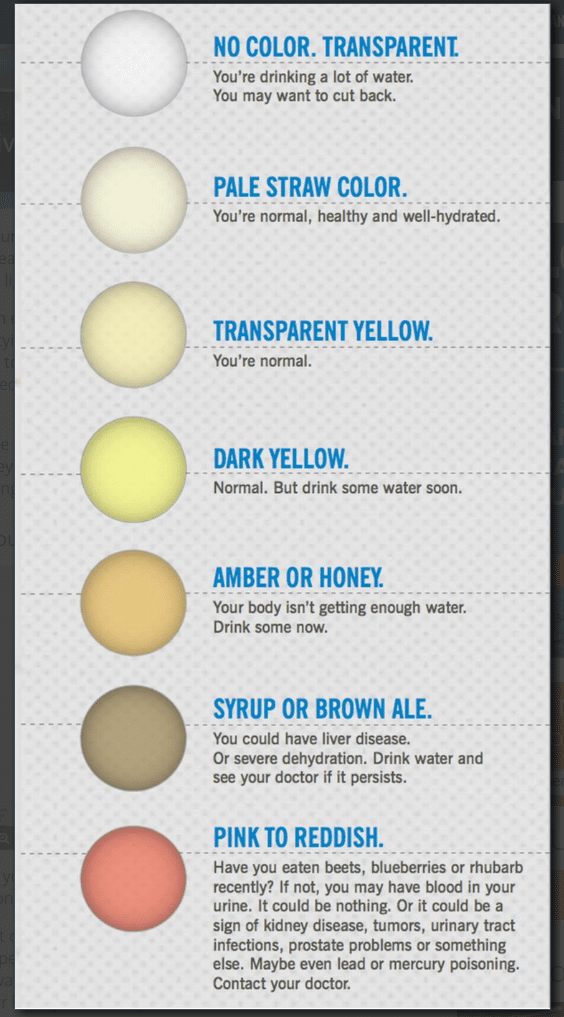Doctors didn’t know what to make of it. They had never seen it before…
The patient was peeing purple.
A 70-year-old woman had been hospitalized with a stroke. Her doctors reported that the woman’s urine “appeared purple.”
At first, the medical staff was at a loss to explain it.
Urine color is, in fact, a common diagnostic indicator. But none of the doctors had ever heard of purple urine.
The women’s physicians described how they solved the bizarre mystery in a recent issue of The New England Journal of Medicine.
Drs. Leo Placais and Christian Denier reported they discovered their patient had recently consumed tryptophan. It’s an amino acid found in eggs, fish, chicken, turkey, and peanuts.[1]
They found that the tryptophan was metabolized in the woman’s digestive tract and liver to form the compound indoxyl sulfate. It was broken down by the patient’s natural bacterial enzymes to form indigo and indirubin. These compounds combined in the woman’s urine to create the color purple.[2]
Dr. Guy Mintz is the director of cardiovascular health at Sandra Atlas Bass Heart Hospital in Manhasset, N.Y. He said a wide variety of bacterial strains, including healthy ones, can potentially lead to purple urine. “Purple urine is not related to an infection,” he said[3]
After receiving fluids over a few days, the woman’s pee returned to normal.
What Should Your Pee Look Like?
Since the earliest days of medicine, urine has been a useful tool of diagnosis. It often doesn’t take a lab test to know that urine indicates a medical problem. You can tell just by looking at the color. Healthy pee should be a pale straw color.[4]
The chart below from the Cleveland Clinic shows the most common hues of urine and what they may mean. Generally, lighter colors are no cause for concern. But darker urine can indicate dehydration or disease.

Weird Pee Colors: What Do They Mean?
Less often, your urine can turn odd colors when you have an illness or are taking certain medications or supplements.[5] [6]
Orange: You could have a liver or bile duct condition. Orange urine can also be caused by food dyes and vitamin B complex supplements. Two common medications can cause orange pee. They are phenazopyridine for urinary tract infections and warfarin, a blood thinner.
Blue or Green: The bacteria that cause urinary tract infections can turn urine blue or green. So can methylene blue. This is a dye used in medical tests.
Black: Yes, urine can be black. It is caused by certain drugs and supplements including nitrofurantoin (antibiotic), metronidazole (antifungal), methylcarbamal (muscle relaxant), and cascara (natural laxative).
If your urine is an odd color, don’t wait to see your doctor. If the strange hue is being caused by an infection, the sooner you get treated, the better.
Editor’s Note: Discover natural, non-drug methods to transform your health. Read Independent Healing. It’s your best source for unbiased, evidence-based medical information. To subscribe, go HERE.
Related Articles
This Weird ‘Pee Problem’ Affects Men, Too?
Tell Your Doctor: ‘Stop With the Urine Tests’
7 Weird
Signs You Have Heart Disease
Like this Article? Forward this article here or Share on Facebook.
[1]https://www.healthline.com/health/tryptophan#foods-with-tryptophan
[2]https://www.nejm.org/doi/10.1056/NEJMicm1905446
[3]https://consumer.healthday.com/diseases-and-conditions-information-37/urine-problems-news-687/woman-s-suddenly-purple-pee-had-doctors-guessing-751718.html
[4]http://www.livescience.com/55602-what-pee-and-poop-color-says-about-health.html
[5]https://medlineplus.gov/ency/article/003139.htm
[6]http://www.disabled-world.com/calculators-charts/urine-facts.php
